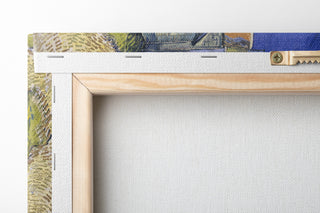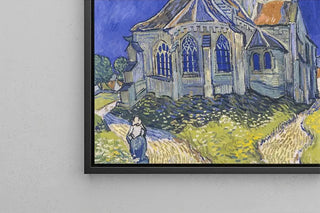The Death of Mary The right panel of the Wurzach altar - Hans Multscher

The poignant scene of The Death of Mary revealed through Hans Multscher's talent
In this art print of The Death of Mary The right panel of the Wurzach altar, the composition unfolds with solemn gentleness: kneeling figures, finely sculpted drapery folds, and a play of light emphasizing emotion. Earth tones and golds blend with shadows to create a contemplative atmosphere, while the precision of the drawing recalls the sculptural virtuosity of the period. Attention to faces and gestures gives an intimate intensity, inviting the viewer to explore every detail. This interpretation captures the narrative strength of the original while preserving its visual delicacy.
Hans Multscher, master of late Gothic sculpture and painting
Hans Multscher, a major figure of late Gothic art in Germany, marked the transition between sculpture and painting with a keen sense of volume and religious storytelling. Active in the 15th century, he is recognized for his altarpieces where anatomical precision, naturalistic drapery, and expressive sensitivity are evident, influencing workshops in southwestern Germany. Among his significant works, the Wurzach altarpieces demonstrate a balance between liturgical solemnity and the humanity of the figures. This art print pays tribute to his artistic legacy and his realistic approach, stemming from a refined artisanal tradition.
A decorative acquisition with multiple advantages
This art print of The Death of Mary The right panel of the Wurzach altar is ideal for enriching an interior with a touch of history and spirituality. Hung in a living room, library, or office, it adds depth, serenity, and character without overpowering the space. Printed on museum-quality canvas, the art print of The Death of Mary The right panel of the Wurzach altar guarantees color fidelity and long-lasting details; the artwork of The Death of Mary The right panel of the Wurzach altar adapts equally well to contemporary decor and classic atmospheres. Choose this piece to combine historical craftsmanship with decorative elegance.

The poignant scene of The Death of Mary revealed through Hans Multscher's talent
In this art print of The Death of Mary The right panel of the Wurzach altar, the composition unfolds with solemn gentleness: kneeling figures, finely sculpted drapery folds, and a play of light emphasizing emotion. Earth tones and golds blend with shadows to create a contemplative atmosphere, while the precision of the drawing recalls the sculptural virtuosity of the period. Attention to faces and gestures gives an intimate intensity, inviting the viewer to explore every detail. This interpretation captures the narrative strength of the original while preserving its visual delicacy.
Hans Multscher, master of late Gothic sculpture and painting
Hans Multscher, a major figure of late Gothic art in Germany, marked the transition between sculpture and painting with a keen sense of volume and religious storytelling. Active in the 15th century, he is recognized for his altarpieces where anatomical precision, naturalistic drapery, and expressive sensitivity are evident, influencing workshops in southwestern Germany. Among his significant works, the Wurzach altarpieces demonstrate a balance between liturgical solemnity and the humanity of the figures. This art print pays tribute to his artistic legacy and his realistic approach, stemming from a refined artisanal tradition.
A decorative acquisition with multiple advantages
This art print of The Death of Mary The right panel of the Wurzach altar is ideal for enriching an interior with a touch of history and spirituality. Hung in a living room, library, or office, it adds depth, serenity, and character without overpowering the space. Printed on museum-quality canvas, the art print of The Death of Mary The right panel of the Wurzach altar guarantees color fidelity and long-lasting details; the artwork of The Death of Mary The right panel of the Wurzach altar adapts equally well to contemporary decor and classic atmospheres. Choose this piece to combine historical craftsmanship with decorative elegance.





